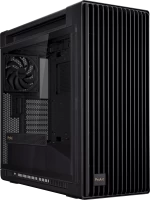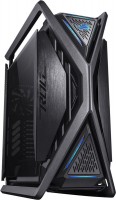Computer Cases Asus series BTF (Back to Future)
prices on 1 modelAsus BTF (Back to Future)
At CES 2024, Asus presented a new line of “wireless” components, Back to Future, which included video cards, cases and motherboards with hidden power cables. Thus, the Taiwanese brand is trying to solve the problem of chaotically hanging cables, which do not look very nice in transparent and translucent cases.
To ensure that the announcement does not go unnoticed, Asus decided to play its trump card by presenting a “wireless” version of its most popular ROG Hyperion BTF Edition case with additional space in the rear and an improved ventilation system. Otherwise, this is the same extremely solid and heavy Full Tower case weighing more than 20 kg, aimed at serious assemblies with massive E-ATX motherboards, giant two-kilogram video cards and gigantic tower coolers up to 190 mm high.
 |
And a little later, the Taiwanese giant announced BTF entry-level cases Asus A21 and A21 Plus. In terms of price and design, they are very similar to the compact Mini Tower models of the Prime series with their expanded motherboard tray, comprehensive cooling and “storage room” for unnecessary cables. Asus understands that ROG Hyperion-level cases are more of a story about exhibitions and fashion shows, so they plan to expand more affordable entry-level and mid-level cases. In 2024, announcements of BTF components are expected from numerous Asus partners, including Thermaltake, Inwin, Cooler Master, XPG, Corsair and many other brands.





